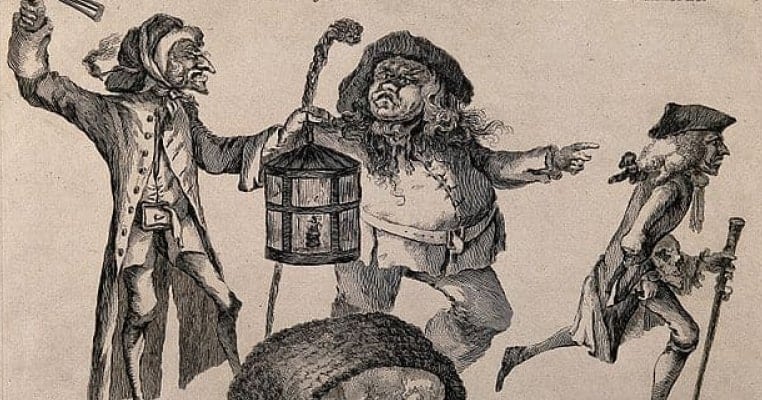The advent of the Renaissance saw a growing interest in the workings of the human body. However, this was an interest that could only be satisfied by the dissection of human corpses. Initially, the practice was a social anathema. However, slowly the authorities came round to the idea and began to make the bodies of executed criminals available for dissection. In 1506, James IV of Scotland tentatively agreed that the Edinburgh Guild of Surgeons and barbers should have one executed felon a year. In 1540, Henry VIII followed suit, granting four executed criminals a year to medical research.
Finally, the 1751 Murder Act in Britain made it mandatory for the bodies of murderers to be dissected after death. However, by the eighteenth century, even this measure could not keep pace with the demands of medical science. The scarcity of criminal corpses grew even worse as transportation began to replace the gallows. So, to answer the requirements of the medical profession, a new kind of criminal arose. Known as the Resurrection Men or Body Snatchers, these eighteenth and nineteenth-century criminal gangs robbed graveyards of the newly deceased, selling them onto anatomist. Some would even steal the deceased from their deathbeds. However, others turned to murder- and so brought about the Resurrection Men’s fall.

The Rise of Resurrection Men
To understand the rise of the resurrection men, its necessary to know why, in times of such high mortality, there were so few corpses available for dissection. For few people, even the desperately poor would consider selling the bodies of their loved ones to medical schools. This was because most people still believed that to rise to eternal life on the Day of Judgment, a Christian needed an intact body. This belief was one of the reasons why the authorities had allowed the dissection of criminal corpses in the first place. For fear of dissection added an extra layer of punishment.
Many hardened criminals were much more affected by the prospect of dissection than the sentence of death itself. In 1831, The Newgate Calendar reported on the trial and execution of John Amy Bird Bell who was sentenced to hang for the murder of a 13-year-old boy. Despite his young age, Bell showed ‘the utmost indifference’ when the judge sentenced him to the gallows. However, he broke down when he learned that his corpse was destined for dissection.
Yet there were only so many criminals, and dead bodies only stayed ‘fresh’ for a limited time. So corpses for medical research were at a premium. As a result, doctors and surgeons were prepared to pay as much as ten guineas for a newly deceased corpse. So grateful were they for fresh subject matter that they were unlikely to question their suppliers too closely about the origin of the body. So it is unsurprising that in the eighteenth century, the illicit trade in dead bodies took off.

To quote Ambrose Bierce in “The Devils dictionary,” body snatchers supplied “the young physicians with that which the old physicians have supplied the undertaker.” These backgrounds of these suppliers of corpses were many and varied. They could be medical students, disreputable undertakers, con men who claimed the bodies of the poor from hospitals or workhouses- or the poor or desperate. For grave robbing was profitable- and relatively risk-free. For stealing a corpse was a misdemeanor under common law- not a felony as a deceased person had no legal standing, and a corpse belonged to no one. So as long as they just took the body and left behind clothes, jewelry, and other possessions, the resurrection men were safe.
However, while the authorities may have turned a blind eye to corpse snatching, grieving relatives did not. Many people held vigils, guarding the graves of their relatives until the corpse was no longer fresh enough to make it a target for the resurrection men. Others who could afford it employed ingenious measures to ensure their deceased loved ones were not disturbed. They would bury their dead in iron coffins or erect iron cages called mortsafes over the graves to protect them from the potential violation. However, the resurrection men had an ingenious way around this particular device. They would dig a tunnel some distance from the grave and so burrow into it.

